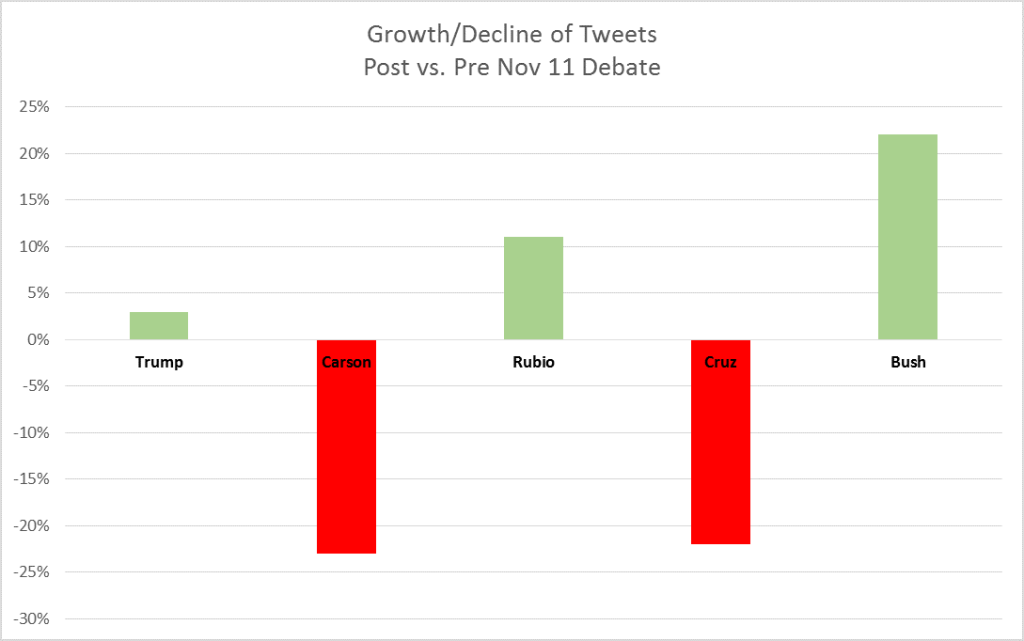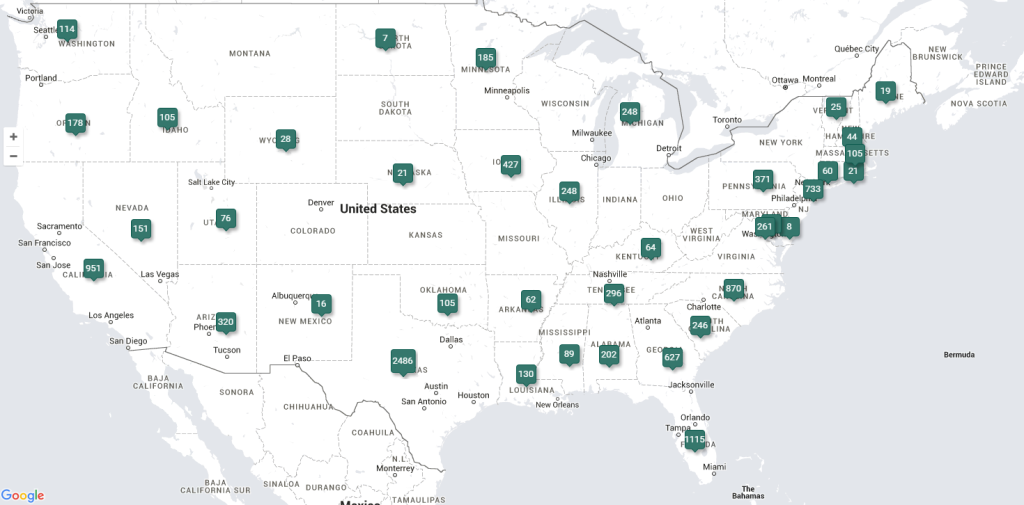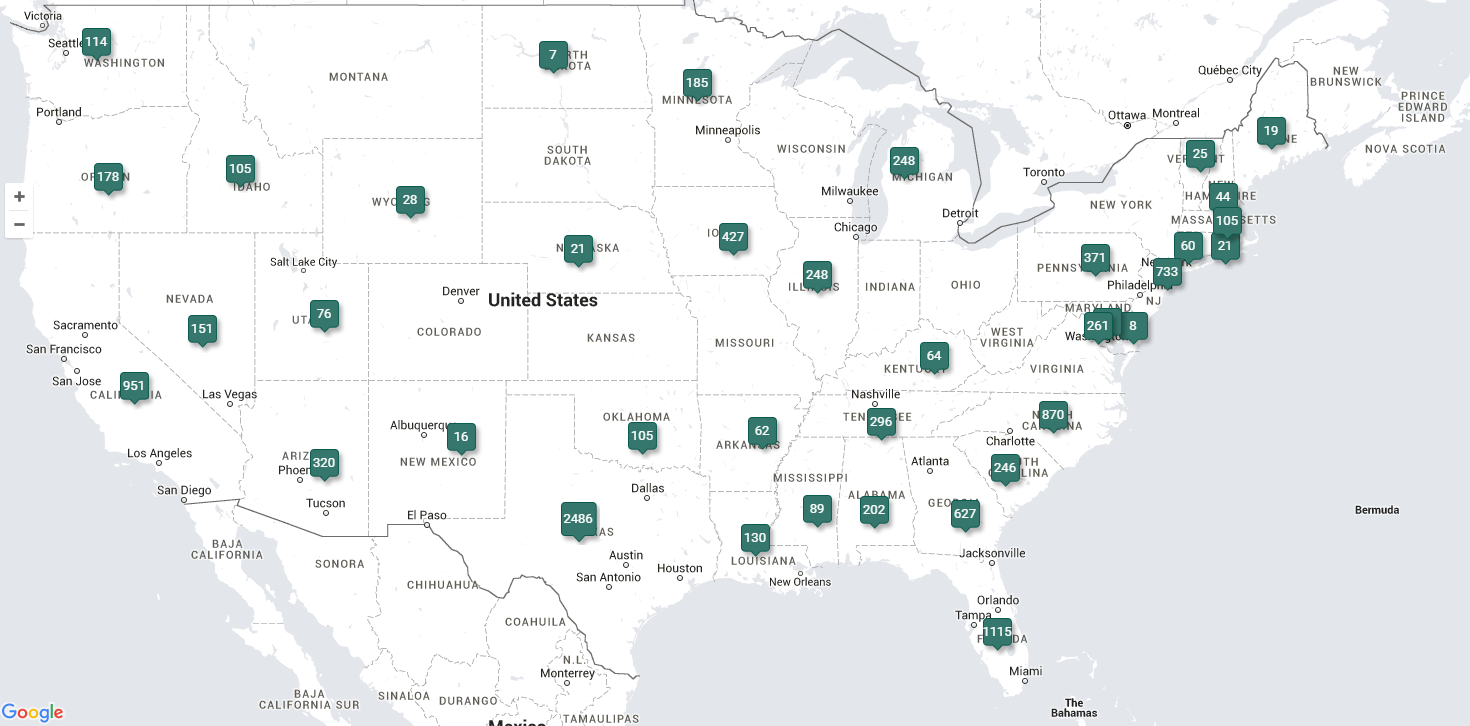“When you talk, you are only repeating what you already know. But if you listen, you may learn something new.” – Dalai Lama
INTRODUCTION
With less than a year before the next US Presidential Election, the Democratic and Republican parties are marching towards their respective presidential primaries but on vastly different paths. On the Democrat side, it’s a two person race with Hilary Clinton and Bernie Sanders.
For the GOP on the other hand, things couldn’t be more convoluted. Donald Trump continues to drive headlines and hold a lead in polls, however other contenders have begun to make inroads. Behind Trump, for the past month trail the same four candidates: Retired Neurosurgeon Dr. Ben Carson, Florida Senator Marco Rubio, Texas Senator Ted Cruz, and Florida Governor Jeb Bush.
Since 1824, polling has been the main method used to take the voters’ pulse. However the advent of social media provides a new and crucial platform for voters to have their voices heard; this becomes especially true since some of the candidates are using social media as their main platform for announcements and debate.
In this piece we are going on a deep dive Twitter “tour” leveraging the Fedica analytics platform as our guide to dig and decipher the data.
Let’s demonstrate by looking at data around the last Republican debate on November 11. If we read the typical coverage from that debate, there really seemed to be no clear “winners” or “losers” consistently reported, and subsequent polls seemed to reflect that same thinking: no one really received any kind of positive or negative impact from the debate.
But was there impact seen through conversations on social media? Can it help us predict trends not seen through traditional analysis like polling? If we look at Twitter in specific time periods – did conversations around any particular politician dramatically increase? If so, what does it tell us?
THE METHODOLOGY
For this analysis, we will focus on the five Republican candidates mentioned: Trump, Dr. Carson, Senator Rubio, Senator Cruz, and Governor Jeb Bush. Because we want to understand what effect a debate may have in Twitter, we looked at the amount of activity around specific “positive” hashtags for each in multiple, defined time periods, a feature that is unique to the Fedica platform. Specifically, we will look at Twitter activity from:
- PRE-DEBATE: 24 hours before the debate (Monday, Nov’ 9, 9PM ET to Tuesday, Nov’ 10, 9PM ET)
- DEBATE: During the debate (Tuesday, Nov’ 10, 9PM-11PM ET)
- POST-DEBATE: 24 hours after the debate (Tuesday, Nov’ 10, 11:00PM ET to Wednesday, Nov’ 11, 11:00PM ET)
In terms of what we collected, after some research we decided to use the three most common positive hashtags per candidate, as we wanted to focus on positive effects only for this analysis. In addition we were able to leverage another Fedica feature: the ability to add in top associated hashtags, which gave us a more complete view of the level of engagement happening. Here are the hashtags by candidate:
| CANDIDATE | HASHTAGS |
| Donald Trump | #trump #trump2016 #donaldtrump |
| Dr. Ben Carson | #bencarson #carson2016 #bencarson2016 |
| Sen. Marco Rubio | #marcorubio #rubio2016 #teammarco |
| Sen. Ted Cruz | #tedcruz #tedcruz2016 #cruzcrew |
| Gov. Jeb Bush | #jebcanfixit #jebbush #jebbush2016 |
ANALYSIS OF THE PERIODS (PRE, DURING, POST DEBATE)
We looked at the activity around these hashtags in each of the time periods. It is important to note that the three time periods were not identical in length (they were 24, 2, and 24 hours for pre, during and post-debate, respectively). We compared the activity to the number of Twitter followers each candidate had at the time, so we can put the level of activity into better perspective. As a gauge for activity, we’ll look at the number of tweets for the chosen hashtags, as well as the maximum reach each candidate had.
A few points to note, before we get into a deeper analysis. In terms of sheer number of followers:
- With 4.78M followers, Trump is far ahead; this is likely due to the TRUMP brand and visibility as a businessman and media celebrity before entering politics
- Bush has the lowest number of followers
- Sen Cruz has the second lowest number of followers
- The other two candidates: Dr. Carson and Sen. Rubio have similar number of followers
In the table below, we will look at Tweets and Reach per candidate in the three defined time periods. It is important to know what we are looking at:
“tweets” – the total number of Tweets with the particular hashtag per candidate
“reach” – is the total number of followers of the people mentioning the particular hashtag per candidate
It is important to emphasize that the above is for the ENTIRE Twitter universe, and not just the candidate’s followers.
| REPUBLICAN CANDIDATE |
# FOLLOWERS | PRE-DEBATE tweets | reach |
DEBATE tweets | reach |
POST-DEBATE tweets | reach |
| Donald Trump | 4.78M | 36K | 175M | 19K | 76.3M | 37K | 179M |
| Dr. Ben Carson | 0.92M | 6.6K | 32.7M | 3.1K | 17.5M | 5.1K | 20.5M |
| Sen. Marco Rubio | 0.95M | 3.6K | 12.3M | 4.4K | 17.8M | 4.0K | 16.3M |
| Sen. Ted Cruz | 0.57M | 27K | 127M | 15K | 77.0M | 21K | 98.0M |
| Gov. Jeb Bush | 0.36M | 1.8K | 18.3M | 2.3K | 16.3M | 2.2K | 17.4M |
A few things immediately stand out:
Despite Ted Cruz having the second lowest number of followers on Twitter (i.e. his immediate reach/ # of followers is relatively low), he generates a lot traffic in the Twitter universe; his reach during the debate (77M) is more than Trump’s.
Surprisingly, Gov. Bush with the lowest number of followers generated similar number of reach numbers as Dr. Carson and Sen. Rubio (with ~3x the followers). The notion (reflected in traditional polls) that Gov. Bush is “finished” seems premature.
As to Dr. Carson, it seems his momentum is fading. He is the one candidate who went down the most in terms of reach post-debate (from 32.M to 20M; down by ~50%). By this measure, Dr. Carson was the biggest “loser” of the debate.
Sen. Rubio on the other hand enjoyed the highest increase in reach post rebate: up by approximately 30%. By this measure, if Dr. Carson is the loser, then Sen. Rubio is the “winner” of this debate
Lastly, Mr. Trump clearly has the highest number of reach; in some cases by >10x; no surprises here.
We also defined a third data element: “buzz”; this is the total “reach” divided by the candidate’s immediate reach (i.e. # of Followers). Essentially we wanted to see the relationship between the TOTAL numbers of people talking about the candidate vs. the number of his OWN immediate reach (i.e. his followers). This number can be considered a measure of amplification. Buzz/amplification should not be viewed in isolation; rather it may provide support/strength to the other primary signals (e.g. reach).
We augmented the table above with the “buzz”.
| REPUBLICAN CANDIDATE |
# FOLLOWERS | PRE-DEBATE (tweets | reach | buzz |
DEBATE (tweets | reach | buzz) |
POST-DEBATE (tweets | reach | buzz) |
| Donald Trump | 4.78M | 36K | 175M | 37 | 19K | 76.3M | 16 | 37K | 179M | 37 |
| Dr. Ben Carson | 0.92M | 6.6K | 32.7M | 35 | 3.1K | 17.5M | 19 | 5.1K | 20.5M | 22 |
| Sen. Marco Rubio | 0.95M | 3.6K | 12.3M | 13 | 4.4K | 17.8M | 19 | 4.0K | 16.3M | 17 |
| Sen. Ted Cruz | 0.57M | 27K | 127M | 222 | 15K | 77.0M | 135 | 21K | 98.0M | 171 |
| Gov. Jeb Bush | 0.36M | 1.8K | 18.3M | 50 | 2.3K | 16.3M | 45 | 2.2K | 17.4M | 48 |
Some notable points:
Ted Cruz’s buzz factor is 5-8X stronger than Trump’s. Probably a combination of a very engaged followers, and a wide spread resonance (as reflected by sheer number of reach).
Gov. Bush with the lowest number of followers has the second highest buzz; an indication that his message travels further and as much as Sen. Rubio and Dr. Carson.
As to Dr. Carson, declining buzz factor supports the notion that he is fading.
Mr. Trump – other than notable buzz drop during the debate (by more than 50%), we can’t see particular further insight.
Let’s now look at the sheer number of Tweets POST vs. PRE.
| REPUBLICAN CANDIDATE |
# FOLLOWERS | PRE-DEBATE tweets |
POST-DEBATE tweets |
Tweets Growth/decline |
| Donald Trump | 4.78M | 36K | 37K | 3% |
| Dr. Ben Carson | 0.92M | 6.6K | 5.1K | -23% |
| Sen. Marco Rubio | 0.95M | 3.6K | 4.0K | 11% |
| Sen. Ted Cruz | 0.57M | 27K | 21K | -22% |
| Gov. Jeb Bush | 0.36M | 1.8K | 2.2K | 22% |
The results support the reach data. One exception though is that Sen. Cruz’s number of Tweets post-debate declined. Perhaps this can be explained by his large number of Tweets in the two hours during the debate.

In summary, from a Twitter perspective:
- Trump’s reach remained unchanged and is the highest
- Bush, while not getting a meaningful “bump” from the debate, his reach was similar to the candidates that are well ahead of him in the traditional polls. Fedica Twitter analysis is telling us that writing off Sen. Bush is premature
- This analysis predicts that Dr. Carson is fading a way
- Rubio was the only one with increased reach post-debate vs. pre-debate, and the only candidate who could claim a “bump” from the debate
- Cruz’s reach was the second highest overall, and the highest during the debate; this analysis is telling us of undercurrent in support of Sen. Cruz
So Sen. Cruz activity stands out in reach and even in absolute # of Tweets. Let’s look closer at Cruz from another angle: geography, a prominent feature of the Fedica platform.
The Geographic data (as well the other) is interactive and one is able to drill down by state and city; it is a gold mine in determining how activity and followers travel in the Twitter universe and in the real universe. To keep things to a manageable size, we are looking at a snap shots at state level for Sen. Cruz only. A dynamic, view, and interactive drill down of the data on an actual USA map is very easy to do on Fedica, and produces fascinating insight; particularly in an electoral system like the US that is region based.
Let’s look how at Gov. Bush map vs. Sen. Cruz; the startling difference between them in all states and particularly Florida. This map is for during the debate.
Gov. Bush Tweets MAP – during Debate

Sen. Cruz Tweets MAP – during Debate

The Tweets show a healthy spread for Cruz in the Eastern and Southern states. He is very strong in Texas (to be expected, as that is the candidate’s home state). He also performs very well in the state of Florida; in-fact in each of the time periods he outpaces Governor Bush by anywhere from 6 to 8 in activity, which is incredible considering Florida is Bush’s home state. Trump performs well in Texas (slightly behind Cruz in activity in all three time periods) but Cruz is well ahead of Trump in the Northeastern states.
There is another important dimension we need to bring into this equation to help us make some conclusions – the demographics of Twitter. Twitter is more heavily skewed towards the younger demographic (37% of Twitter users are 18-29, another 25% are 30-49).
So if we take all of this data into account, the most interesting things it could be telling us is that:
- Senator Cruz is primed to make a major move in the candidate race
- Gov. Bush future is ahead of him
- Dr. Carson peaked, while Sen. Rubio is rising
We shall follow-up in the next debate. Stay tuned!

